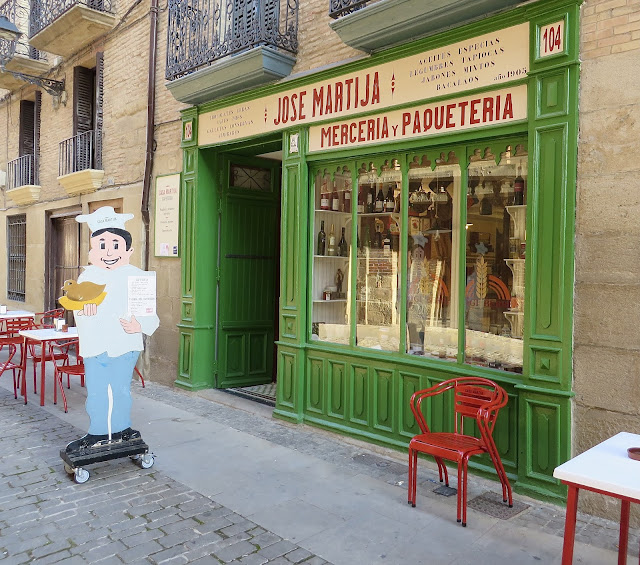Dramatic skies followed us during the last leg of Camino Aragones on Tuesday, and intermittent patches of blue peeked through gray clouds. It was a relatively easy walk compared to the hills and valleys on previous days. There were no other walkers except Dad, Ana, Joaquin, and me until the town of Obanos, which is where the Aragones merges with Camino Frances.
One of the last little towns before Obanos is Olcoz. It's known for a medieval tower, which rises above the rest of the buildings.
In Eneriz we gave a toast to Camino Aragones at the last bar break with Ana and Joaquin. They'll now be going home to Malaga after reaching Puente la Reina.
Tiger lilies in Eneriz
Not far from Puente la Reina is the octagonal church Santa Maria de Eunate (Basque for "house of 100 doors"), dating back to 1170. One of the most important Romanesque structures in Navarra, the church has unknown origins, perhaps associated with the Knights Templar and modeled after the Holy Sepulchre in Jerusalem. In the foreground is the Pilgrim Pouch, whose adventures continue.
Archway in Obanos
Slanted door #9 in Obanos -- one of the more unique entryways seen along the Road. I also took a picture of it on our first Camino.
As soon as we reached Obanos there appeared many more pilgrims. This Spanish peregrina was walking with her perro who carried his own gear.
At the albergue Padres Reparadores in Puente la Reina we met fellow father-daughter peregrinos, Mike and Hannah from New Zealand. Hannah had recently lived in San Francisco. She brought along her ukulele for the Road and is learning new songs from other pilgrim musicians. Mike had played rugby and also worked in ceramics "throwing" pots. They both have positive 'Camino spirit'!
Archway to Puente la Reina's famous medieval bridge --
"The Queen's Bridge"
The Queen's Bridge over the Rio Arga has 6 arches and was constructed in the 11th c. by queen Dona Mayor who had it built to accommodate pilgrims on their way to Santiago. The original structure included 3 defensive towers, one of which contained a statue of the Virgen del Puy. Legend says that the image was visited by a bird who groomed it with water from the river below.
The largest hand door knocker seen yet.
Down the Road in the old section
Love those storks and their nests!
This shop's services included selling men's clothing ("merceria") and mailing parcels ("paqueteria").
On Wednesday morning we caught the bus to Pamplona where we'll train to Burgos. From there we'll bus to our starting point for the second leg of Camino Tres, the town of Fromista.
At the Pamplona train station Dad talked with a group of high school students from Cincinnati -- they're here traveling with a Spanish club. They asked lots of questions about the Camino and perhaps one day will become peregrinos!






















No comments:
Post a Comment